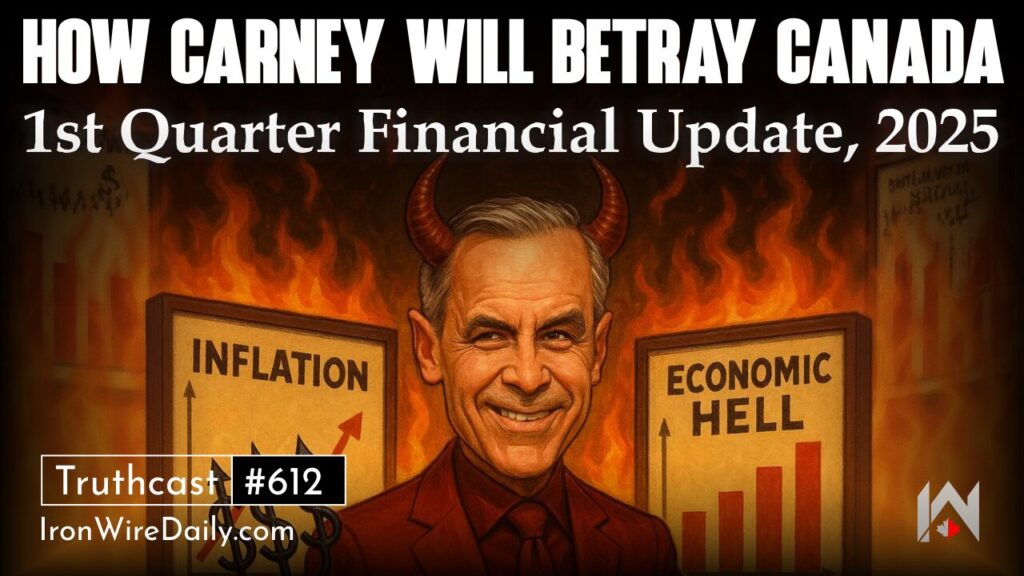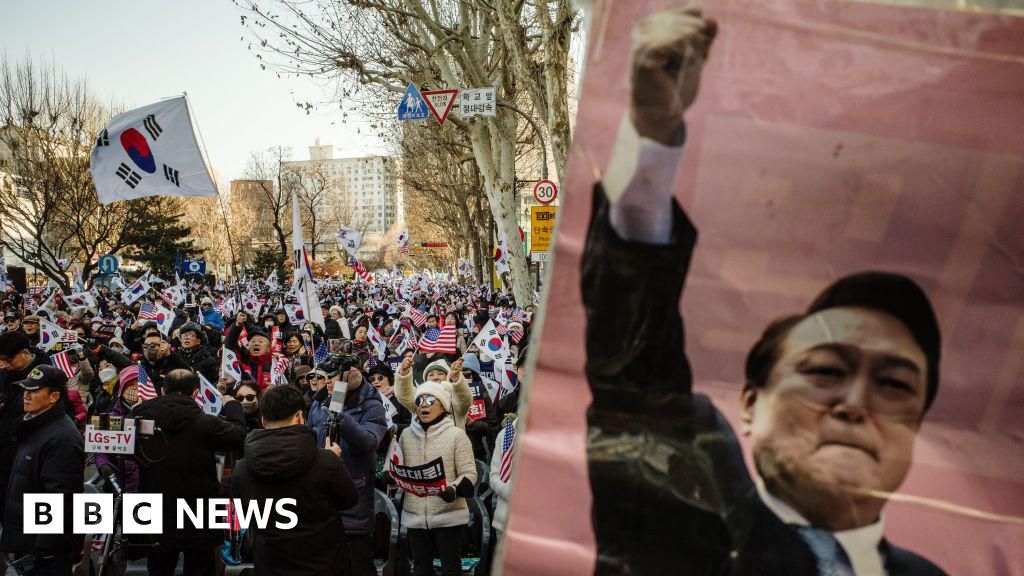Have You Said “Thankyou” Once?

By Benjamin Picton, senior macro strategist at rabobank
US equities tanked yesterday in their most savage one-day selloff since the early days of Covid in 2020. The NASDAQ was hardest hit, down 5.97%, while the S&P500 and DOW gave up 4.84% and 3.98% respectively. European stocks were also savaged. The CAC40 fell 3.31% and the DAX was down 3.01%. The sharp fall in stock prices leaves US equities well in the red for the year to date, while European equities remain in the black. When asked about the market moves President Trump said: “It is to be expected, this is a patient that was very sick. We inherited a terrible economy.”
Bonds rallied across the board yesterday with US 10-year yields falling by 10bps and 2-year yields dropping by 18bps to cause a dramatic bull-steepening of the Treasury curve. The OIS implied path of the Fed Funds Rate now has four further 25bp cuts priced in by January 2026, compared to three at this time on Wednesday.
Gold prices continued to moderate after hitting fresh all-time-highs of $3,166/oz yesterday, and Brent crude is down 6.42% to $70.14/bbl as markets surmise that sweeping US tariffs spell doom for prospects of global growth. Bitcoin – perhaps the best barometer of pure financial risk – sank by almost 4% to be trading just over $82k.
Of course, the price action over the last 24 hours is all about the ‘Liberation Day’ tariff announcements made on Wednesday. Critics are complaining that the method used by the United States to determine trade barriers faced by US producers is simplistic and doesn’t reflect reality. The Administration counters that everyone else has had plenty of time to address trade imbalances and that the duties that are now being imposed are actually the “kind tariffs”. Have you said “thankyou” once?
The United States pursuing US policy goals to the detriment of friend and foe alike has set off outrage around the world. Emmanuel Macron called for a halt on investment into the United States and Ursula von der Leyen said that the EU will first seek to negotiate down the tariffs, but if that fails the EU will impose “countermeasures” and seek to protect its own industry from cheap goods being dumped into the European market by others (read, China). Limitations have already been enacted on imports of duty-free steel.
Von der Leyen said that she “agree[s] with President Trump that others are taking unfair advantage of the current rules”, but she seems to think that the Americans shouldn’t have done anything about it, and should have opted instead for another round fruitless talks. Presumably, ‘others’ does not include the EU in von der Leyen’s eyes, but try selling agricultural products into the European market from abroad and see how far you get.
China has also vowed retaliation. Trump hit China with a 34% reciprocal tariff rate that will stack on top of the 20% tariffs that are already in place. This is a big problem for China, because their economic model is based on subsidising (over)production and then exporting the surplus into the world’s biggest consumer market: the USA. Europe is now understandably terrified that China’s exportable surplus, having been effectively barred from the USA, is going to end up in their market and add to the existing woes of European manufacturers.
The PBOC allowed the CNY to drift lower yesterday to offset some of the pain of the new tariffs. Could we see more currency weakness to come? And would that incur another step up in tariffs from the USA if it were to happen? You can see how a path is being laid for tit-for-tat trade strikes that could all but close bilateral trade between the world’s two largest economies. That will really be curtains for globalization.
The reaction has been different in the antipodes. Australia and New Zealand are grumbling about their exports (principally beef, wine, dairy and sheepmeat) now being subject to a 10% tariff, but there seems to be a grudging acceptance that the outcome could have been worse and that product will still flow into the US market, albeit at less attractive prices than might have been the case otherwise.
The ‘best response’ being countenanced by Australia and New Zealand is to do nothing, because retaliation would likely achieve nothing aside from antagonizing their security guarantor and pushing up prices for consumers. The US has enormous leverage over both countries by virtue of not only their dependence on the US Navy, but the dependence of their banking sector on US capital markets for funding. Close that funding channel down and watch the richly-valued housing markets in both countries implode and take their economies down with it.
Aussie and Kiwi OIS curves are now implying more rate cuts (4.5 in Australia and 4 in New Zealand), but the US administration might take a dim view of any devaluation of the AUD or NZD that results from more aggressive monetary policing easing. Currency manipulation is on the USA’s list of grievances, but so long as devaluation doesn’t result in a structural trade surplus with the USA it may not be a problem, especially since the USA would like Australia and New Zealand to help it contain Chinese ambitions in the South Pacific.
Conspicuous among the tariff rates announced by President Trump was the low numbers for many South American economies. This appears to be further evidence of a reinvigoration of the Monroe Doctrine in US foreign policy designed to pull Latin America deeper into the USA’s economic orbit. Relatedly, Marco Rubio recently met with his counterpart from Argentina to discuss trade and security ties aimed at countering Cuba, Venezuela and Nicaragua, and the Pentagon just announced a series of arms sales to Ecuador.
Rubio has also been speaking with counterparts in Europe, who he says need to plot a trajectory towards increasing defence spending to 5% of GDP(!). He assured Europeans that the United States remains committed to NATO, and suggested that the USA would need to increase its own spending on defense. That seems sensible given the geostrategic challenges that the United States faces, but it is also at odds with Trump’s previous direction to Pete Hegseth to find ways to reduce defence spending by 8% each year.
So, while in many respects the US policy renovation of recent days is a throwback to past ways of doing things, the policies being embraced pre-date the institutional settlement that has mostly prevailed since the end of WWII. The Washington Consensus appears to be on its last legs and the policy goal of “GDP for GDP’s sake” is being replaced by “GDP for the sake of state aims”. Making America great again entails a shift from a consumption-driven economy to a production-driven economy. The logical corollary here is that American living standards are going to have to be lower as consumption is taxed (via tariffs) to provide an implicit subsidy to domestic producers. There are winners and losers in this process, but overall this is unlikely to be bullish for American living standards in the short run, especially if your living standards are derived from the financialized economy that has been the ‘winner’ from the policy framework of the last 45 years.
Unnamed Senior White House officials are now being quoted as saying that the post-World War Two institutions are “no longer fit for our times and our economic situation”. If there was any doubt before that Trump meant what he said when he claimed “the future does not belong to globalists, the future belongs to patriots”, there can be no doubt now.
Loading…














